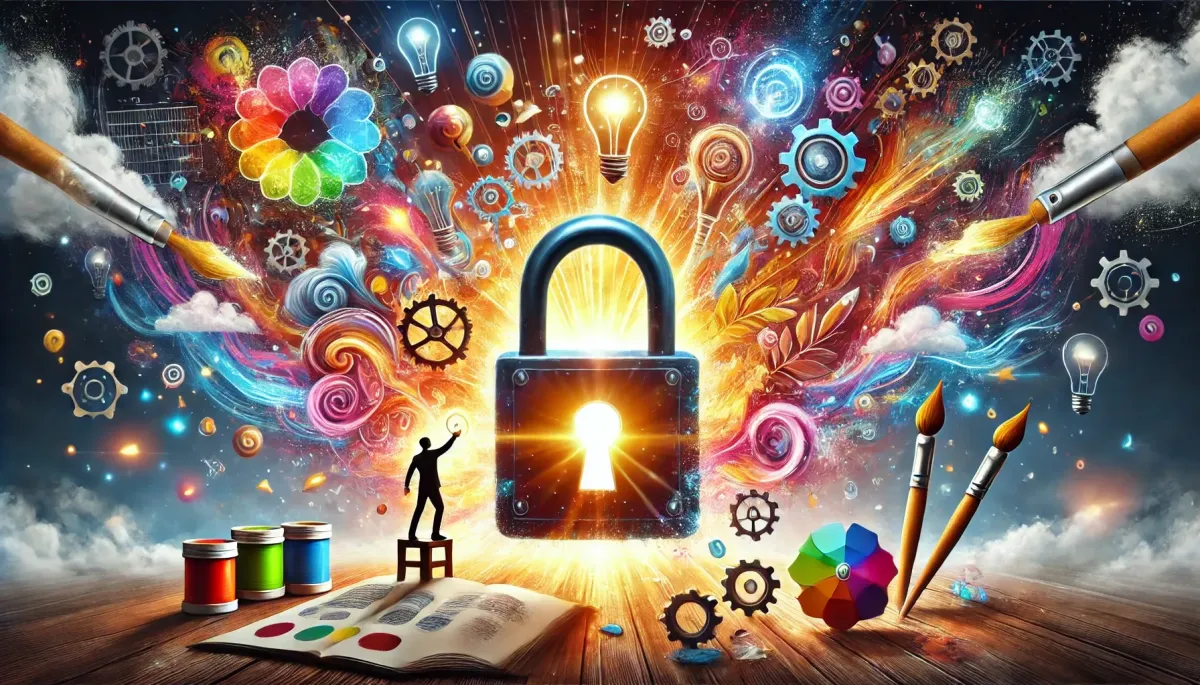Articles

Unlocking Creativity
It's time to unleash the creative powerhouse within you. By exploring various methods and practices, you can tap into your creative potential and enhance your problem-solving skills. In this article, you will learn how to nurture your creativity and develop innovative solutions to challenges. Get ready to unlock a world of endless possibilities and creativity!
Cultivating a Creative Mindset
Embracing Curiosity
For you to unlock your creative potential, it starts with embracing curiosity. Curiosity is the driving force that sparks new ideas and pushes you to explore different perspectives. By staying open-minded and inquisitive, you allow yourself to see the world through a fresh lens, leading to innovative solutions and creative breakthroughs.
Letting Go of Fear and Self-Doubt
Curiosity fuels your creativity, but fear and self-doubt can act as roadblocks. It's important to let go of these negative emotions to free your mind and allow your creative ideas to flow. When you release the fear of failure and the burden of self-doubt, you create space for limitless possibilities and bold experimentation.
The fear of making mistakes or not being good enough can hinder your creative process. By acknowledging these fears and understanding that they are just barriers to overcome, you can take courageous steps towards exploring your full creative potential.
Techniques for Sparking Inspiration
Freewriting and Stream-of-Consciousness
Sparking inspiration through freewriting and stream-of-consciousness can be a powerful way to unleash your creativity. By allowing your thoughts to flow freely without judgment or editing, you can tap into your subconscious mind and uncover new ideas and perspectives. Set a timer for a specific period, like 10 or 15 minutes, and just write whatever comes to mind. Don't worry about grammar or coherence, just let the words flow. You may be surprised at the insights and solutions that emerge from this uninhibited writing exercise.
Mind Mapping and Visual Brainstorming
For a more structured approach to sparking creativity, try using mind mapping and visual brainstorming techniques. Mind mapping involves creating a visual representation of your ideas and their connections, which can help you see patterns and relationships that may not be obvious at first glance. Visual brainstorming, on the other hand, involves using images, colors, and other visual aids to stimulate creative thinking. By engaging both sides of your brain, you can unlock new insights and innovative solutions to solve problems.
Nurturing Your Inner Artist
Despite the hustle and bustle of daily life, it is crucial to make time for nurturing your inner artist. This can involve tapping into your imagination and allowing yourself to daydream freely.
The Power of Daydreaming and Imagination
Artist, let your mind wander and explore the endless possibilities that lie within your imagination. Daydreaming is not a waste of time; rather, it is a powerful tool for unlocking creative potential and problem-solving skills. When you allow yourself to daydream, you give your mind the freedom to roam and come up with innovative ideas that you may not have otherwise considered.
Finding Inspiration in Art and Nature
Any artist knows the importance of finding inspiration in the world around them. Whether it's a breathtaking piece of art or the beauty of nature, these sources can ignite your creativity and spark new ideas. Immersing yourself in art galleries, museums, or simply taking a walk in nature can help you see things from a different perspective and stimulate your creative thinking. Finding inspiration in art and nature is not limited to what you see visually; it also involves tapping into your emotions and connecting with your surroundings on a deeper level. By observing the colors, shapes, and patterns in art or nature, you can draw inspiration that can translate into your own creative work.
The Importance of Solitude and Reflection
Artist, remember the power of solitude and reflection in nurturing your creativity. Taking time for yourself to disconnect from distractions allows you to investigate deep into your thoughts and emotions. Solitude provides you with the space to explore your inner world, reflect on your experiences, and gain insights that can fuel your creative endeavors. The importance of solitude and reflection extends beyond just being alone; it also involves introspection and self-awareness. By reflecting on your thoughts and feelings, you can gain a deeper understanding of yourself and the world around you. This self-awareness is necessary for tapping into your creative potential and fostering a strong connection with your inner artist.
Overcoming Creative Blocks and Barriers
Once again, you may find yourself facing creative blocks and barriers that hinder your ability to tap into your full creative potential. Identifying and challenging negative self-talk is a crucial step in overcoming these obstacles.
Identifying and Challenging Negative Self-Talk
Challenging the negative self-talk that often accompanies creative endeavors is important for unlocking your creativity. When you find yourself doubting your ideas or abilities, take a moment to question those thoughts. Are they based on facts or simply self-limiting beliefs? By challenging and reframing these negative thoughts, you can break free from their hold and allow your creativity to flow more freely.
Building Resilience and Perseverance
For creative individuals, building resilience and perseverance is key to overcoming challenges and setbacks along the creative journey. By cultivating a mindset that embraces failure as a learning opportunity and views obstacles as stepping stones to growth, you can develop the resilience needed to push through creative blocks and continue pursuing your creative goals.
Negative self-talk and doubts may arise when facing creative challenges, but it's important to remember that setbacks are a natural part of the creative process. By cultivating a mindset of resilience and perseverance, you can navigate these obstacles with greater ease and continue to push yourself to new creative heights.
Seeking Out New Experiences and Perspectives
Overcoming creative blocks and barriers can also be achieved by seeking out new experiences and perspectives. By exposing yourself to different cultures, art forms, and ways of thinking, you can broaden your creative horizons and draw inspiration from unexpected sources. Embracing diversity in your creative pursuits can spark fresh ideas and insights that may have been previously undiscovered.
Identifying opportunities to seek out new experiences and perspectives is important for nurturing your creativity. Whether it's exploring a new hobby, immersing yourself in a different environment, or engaging with people outside of your usual social circles, these experiences can ignite your imagination and fuel your problem-solving skills in unique ways.
This chapter focuses on overcoming creative barriers and finding ways to unlock your full creative potential. By challenging negative self-talk, building resilience, and seeking out new experiences, you can navigate through creative blocks with confidence and continue to grow as a creative individual.
Collaborative Creativity and Feedback
The Benefits of Working with Others
Not every act of creation has to be a solitary endeavor. In fact, sometimes the most innovative and impactful ideas come from collaboration with others. Working with a team allows you to pool together different perspectives, ideas, and skills, which can lead to more dynamic and creative solutions to problems.
Giving and Receiving Constructive Feedback
With giving and receiving constructive feedback, you open yourself up to growth and improvement. Constructive criticism from others can help you see blind spots in your work and offer valuable insights on how to further develop your ideas. Likewise, providing feedback to others can sharpen your own critical thinking skills and help you hone your ability to assess and improve upon creative outputs.
It is important to approach feedback with an open mind, viewing it not as a criticism of your work but as an opportunity for improvement. Embrace feedback as a valuable tool for enhancing your problem-solving skills and fostering greater creativity.
Embracing Diversity and Different Perspectives
An important aspect of collaborative creativity is embracing diversity and different perspectives. Feedback and ideas from individuals with varying backgrounds, experiences, and viewpoints can challenge your assumptions, push you out of your comfort zone, and ultimately lead to more innovative and inclusive solutions. By welcoming and actively seeking out diverse perspectives, you can tap into a wealth of creative potential and enhance your problem-solving abilities.
Feedback from different perspectives can help you see solutions from angles you may not have considered before. This can spark new ideas, push you to think outside the box, and ultimately lead to more effective and innovative problem-solving strategies.
Sustaining Creativity and Motivation
Keep your creative juices flowing by setting realistic goals and deadlines for yourself. This will help you stay focused and motivated, as you have clear targets to work towards. By breaking down your larger creative projects into smaller, manageable tasks, you can track your progress and celebrate each milestone along the way.
Setting Realistic Goals and Deadlines
On your creative journey, it's necessary to set realistic goals and deadlines to keep yourself on track. Whether you're working on a writing project, a design concept, or a business idea, having a clear roadmap will help guide your creative process. Setting achievable targets will prevent you from feeling overwhelmed and boost your motivation as you see yourself making steady progress.
Creating a Conducive Work Environment
To enhance your creativity and problem-solving skills, it's crucial to create a conducive work environment that inspires and motivates you. Make sure your workspace is organized, clutter-free, and personalized to reflect your creative style. Surround yourself with objects, artwork, or colors that spark your imagination and help you stay focused on your goals.
Plus, consider incorporating elements of nature, such as plants or natural light, into your work environment. Research has shown that being exposed to natural elements can improve cognitive function and creativity. By connecting with the natural world, you can find new inspiration and energy to fuel your creative endeavors.
Celebrating Small Wins and Progress
With each small win and milestone you achieve, take the time to celebrate your progress. Acknowledge the hard work and effort you've put into your creative projects, no matter how minor they may seem. By celebrating these small victories, you'll stay motivated and inspired to keep pushing forward towards your larger creative goals.
Wins
With each accomplishment, whether it's completing a chapter of your novel, finalizing a design concept, or solving a challenging problem, take a moment to appreciate your achievements. By recognizing and celebrating your progress, you'll build momentum and confidence in your creative abilities, propelling you towards even greater success.
Summing up
From above-mentioned methods and practices, you have learned valuable techniques to unlock your creativity and enhance your problem-solving skills. By incorporating habits such as journaling, mindfulness, brainstorming, and seeking out new experiences, you can tap into your creative potential and approach challenges from a fresh perspective. Remember that creativity is a skill that can be nurtured and developed over time, so don't be afraid to experiment and push the boundaries of your imagination. By embracing creativity in your daily life, you can unlock new opportunities for growth and innovation.
© 2024 Connected Souls. All Rights Reserved.
